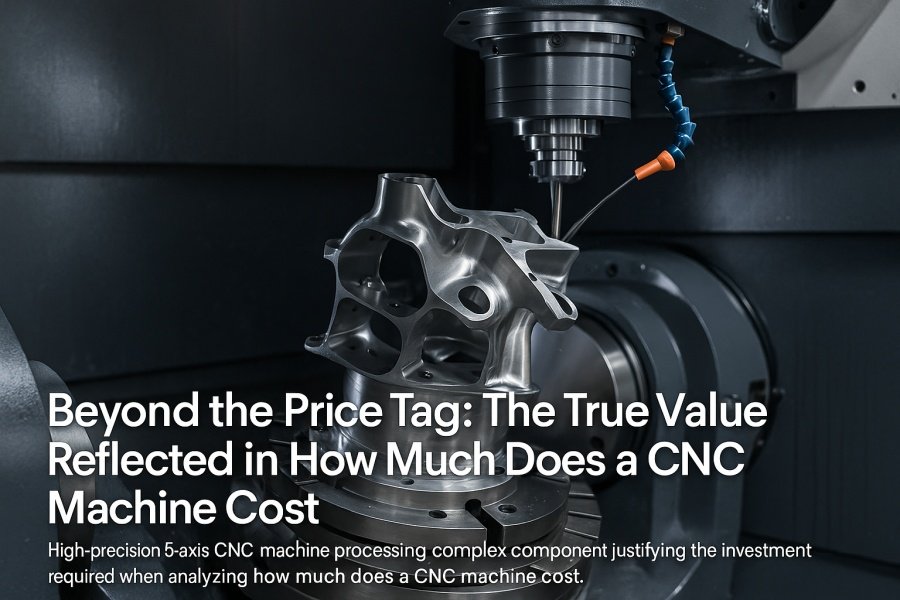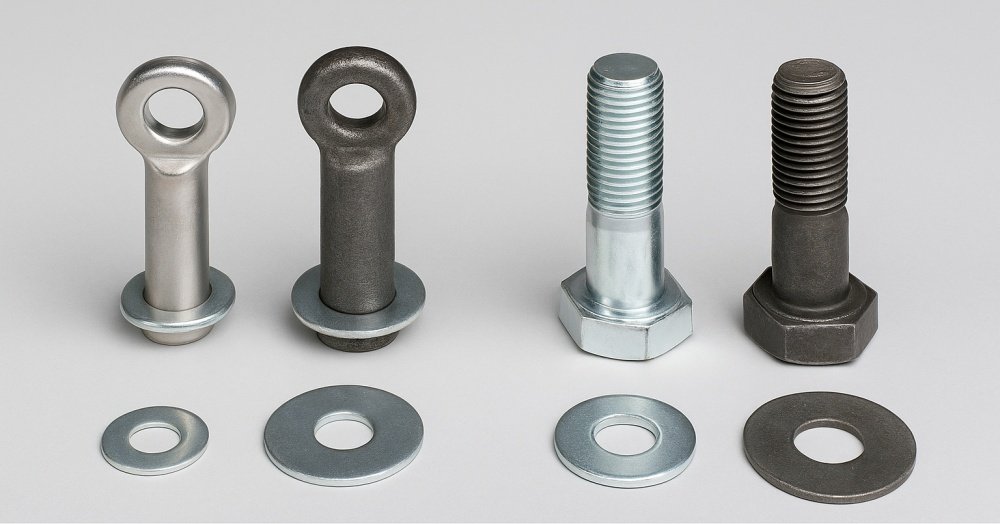Table of Contents
For procurement specialists, understanding the underlying manufacturing economics is critical. The commercial query, how much does a CNC machine cost, is often the starting point for determining the final unit price and quality of your precision components. The answer goes far beyond the initial capital expenditure of the equipment; it encompasses the rigor, precision, and efficiency a modern facility can offer—all of which determine the ultimate reliability and price of the component you purchase.
Deconstructing the Investment: How Much Does a CNC Machine Cost Really?
When a quote arrives for custom parts, the price reflects more than just the material and the labor hours. It accounts for the technological overhead that guarantees quality and repeatability. This high-cost investment is why components from different suppliers, though seemingly identical on paper, perform differently in the field.
Machine Rigidity and Precision Tolerance
The best CNC machines—the ones capable of holding the micron-level tolerances required for mission-critical parts—represent a significant capital outlay. This high cost ensures rigidity, which is vital for preventing chatter and maintaining dimensional accuracy, especially when machining hard materials. A supplier using top-tier, high-cost equipment is implicitly offering lower scrap rates and tighter tolerances, which translates directly to higher component reliability and reduced hidden costs (like assembly failures) for the buyer. This initial machine investment, reflected in the answer to how much does a CNC machine cost, directly minimizes downstream risk for the client.
Specialized Tooling and Software
The cost of advanced equipment is compounded by specialized tooling and CAM software. Producing intricate parts like heavy duty pins requires multi-axis capability and advanced software for toolpath optimization, reducing cycle time. Furthermore, tools used for specific threading operations on components like an m18 bolt size must be frequently monitored and replaced to maintain thread class and surface finish. The quality of a facility is often indicated by its investment in these peripherals.
Understanding these inputs allows buyers to see component pricing not just as a number to be negotiated down, but as a reflection of the guaranteed precision.

Functional Fasteners: Understanding Heavy Duty Pins and Component Standards
In heavy machinery, automotive suspension, and industrial rigging, the simple act of joining two parts is often handled by more robust solutions than standard bolts. Here, we look at heavy duty pins and their fundamental operation.
How Do Pin Fasteners Work?
Unlike bolts, which rely on clamping force generated by tension in the threads, pin fasteners generally rely on shear strength and bearing strength.
- Shear Strength: The pin resists forces acting perpendicular to its axis, preventing two or more components from sliding apart.
- Bearing Strength: The pin withstands the concentrated forces where it contacts the bore holes of the components being joined.
Because they handle substantial lateral forces, the precision in manufacturing heavy duty pins is absolute. Any deviation in diameter or surface finish can lead to a sloppy fit, premature wear on the pin and the housing, and eventually, catastrophic failure under dynamic load. This requirement for tight-fit tolerances is another factor driving the necessary investment reflected in the core query: how much does a CNC machine cost to produce parts of this caliber.
Standardized Threading: The M18 Bolt Size and Beyond
While pins tackle sheer forces, bolts provide clamping force and tension. Knowing your standards is essential for smooth assembly. The m18 bolt size represents a specific metric standard critical for structural and load-bearing applications. When procuring M18 bolts, a buyer must ensure not just the thread pitch, but the thread class and tolerance—parameters that are directly controlled by the quality of the CNC threading process. A thread cut on cheap, unstable machinery is prone to microscopic defects that act as stress concentration points, drastically reducing the bolt’s fatigue life compared to one produced with high-rigidity equipment.
The Support System: Fender vs Flat Washer Selection
Fasteners rarely work in isolation. Washers are the unsung heroes of the assembly, yet many buyers confuse their specific roles.
The distinction between fender vs flat washer (or flat washer vs fender washer) is based entirely on function and surface area distribution.
| Washer Type | Primary Characteristic | Primary Function | Application Focus |
| Flat Washer | Standard outer diameter (OD) relative to inner diameter (ID). | Distributes clamping force over a moderate area; provides a smooth bearing surface. | General assembly, ensuring even pressure beneath a nut or bolt head. |
| Fender Washer | Very large outer diameter (OD) relative to its ID. | Distributes clamping force over a wide area; covers oversized or damaged holes. | Soft materials (wood, plastic), sheet metal, or securing components against large, irregular openings. |
When assembling heavy duty pins or bolts, choosing the wrong washer type can negate the clamping force and compromise the structural integrity. High-precision CNC cutting ensures the washers themselves are perfectly flat, without burrs, which is non-negotiable for maintaining load distribution.

Precision Sizing: Comparing Heavy Duty Pins and the Difference Between Fender and Flat Washers
The Material Factor: Strength and Composition
The final performance factor for any fastener is the material. Components are not simply metal; they are alloys with specific heat treatments and properties.
For instance, understanding material composition is key. While many industrial parts are made of ferrous metals, non-ferrous components are common in specialized environments. Analyzing characteristics like brass ultimate strength is necessary when selecting materials for corrosion-resistant or conductive parts.
- Brass and Bronze: Though often confused, understanding how to tell brass from bronze is crucial because bronze (an alloy primarily of copper and tin) generally offers greater hardness and better corrosion resistance in marine environments than brass (an alloy of copper and zinc). The manufacturing process must account for the material’s specific properties. The material properties determine the true value derived from the initial machine investment, demonstrating how much does a CNC machine cost is ultimately related to material processing capability.
Conclusion: Sourcing Smarter, Not Cheaper
Effective procurement in the CNC manufacturing sector is a comprehensive task. It requires understanding how much does a CNC machine cost to gauge a supplier’s foundational capabilities, and simultaneously mastering the technical details of the components themselves.
By knowing the shear mechanics of how do pin fasteners work, the sizing criticalities of an m18 bolt size, and the functional difference between fender vs flat washer, buyers can ensure they source reliable, high-performing heavy duty pins and supporting components. The strategic integration of material knowledge, precision manufacturing, and adherence to component standards ultimately determines project success and long-term cost savings.
💬 Ready to discuss your CNC project?
Fill out the form below and our engineering team will get back to you within 24 hours.
